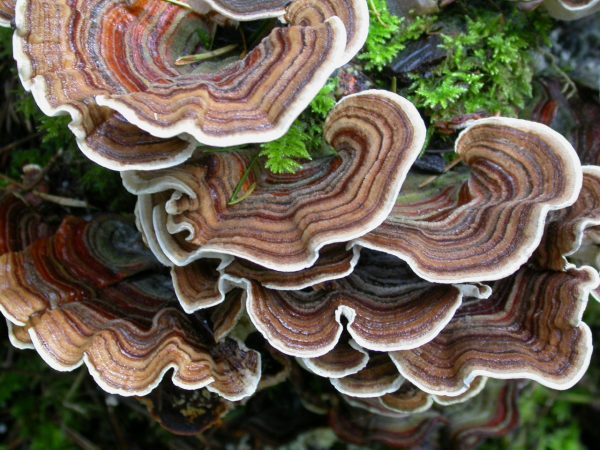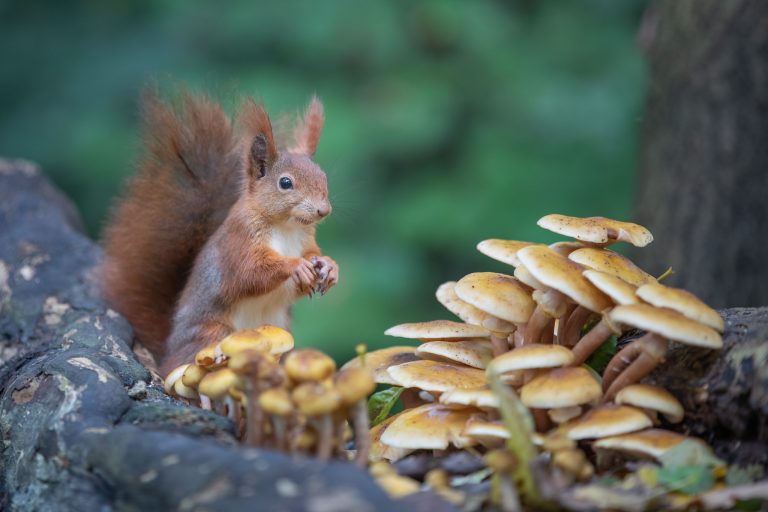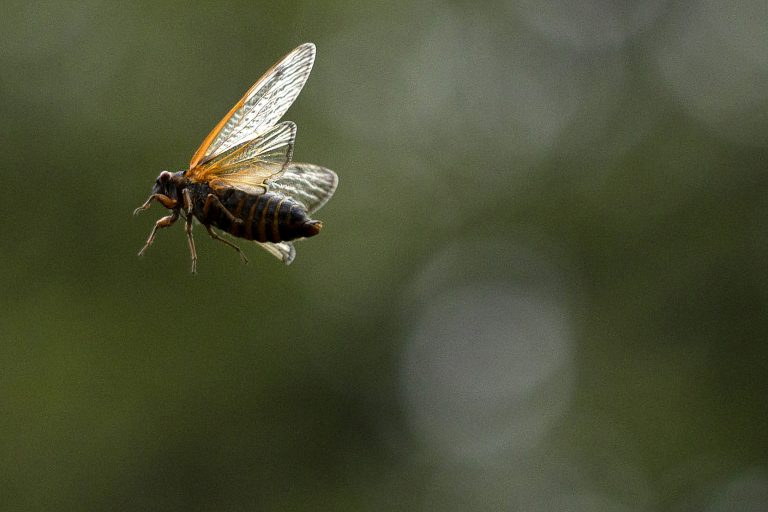Oddly enough, the further we advance in science and technology, the bigger the mess we seem to make. Environmental pollution, ecological imbalance, disease, famine, vanishing natural resources and moral decay are growing concerns that threaten our very existence. Could we bring these matters back into balance by strengthening our relationship with one vast and powerful kingdom?
Neither plant nor animal, fungi go far beyond being a fantastic source of food and medicine in the form of mushrooms. Mycelium — the main body of fungi — is continually healing the earth in ways our modern technology can’t even approach. Lesser creatures have benefited and thrived thanks to their strong partnership with fungi, while we are just closing in on a collaboration that could save us from ourselves. Let’s look at the progress of our relationship thus far.

A history of fungi
For tens of millions of years, hundreds of species of termites, ants and weevils have been cultivating fungi for food. For us, fungiculture is a relatively recent development, although humans around the world have been using mushrooms since prehistoric times — for food (as well as food for thought) and medicine.
Earliest evidence of mushroom consumption may be in the form of spores, found in the teeth of 19,000 year-old human remains. Other evidence was discovered in Chile — at a 13,000 year-old archeological site, and in Spain — where our Paleolithic ancestors of around the same time period apparently enjoyed boletes, a common mushroom in Europe and across the northern hemisphere.

The use of psychedelic mushrooms, also known as “magic mushrooms” came later, with artistic depictions of their effects found in Australia — dated 10,000 BC, in Algeria — dated around 9,000 BC, and in Spain — dated 4,000 BC. Some suggest that their use may have been instrumental in the evolution of language, religion, or perhaps medicine — the next leg of our journey.
Success
You are now signed up for our newsletter
Success
Check your email to complete sign up
Ötzi the iceman — a 5,300 year-old mummy discovered in a glacier along the border between Italy and Austria — was found to have medicinal birch polypore in his digestive system, with additional medicinal mushroom species carried on his person. Traditional Chinese medicine, with a history going back at least 2,000 years, calls on several mushroom species for their healing properties. Once we knew how to use mushrooms for healing, humans began an enduring adventure with fungiculture.
A primitive method of cultivating the nutritious wood ear mushroom (Auricularia auricula) began in the 600’s during the Tang Dynasty. Early mushroom cultivators in China managed to produce wood ears by simply preparing a substrate of steamed bran and straw — relying entirely on nature to provide the spores.

Shiitake (Lentinula edodes) cultivation on logs may have originated around the same time in Japan, with the placement of already producing wood over fresh logs for the purpose of inoculation.
About 1,000 years later in Europe, it was observed that the button mushroom (Agaricus bisporus) would often grow where its washing water was disposed of; and it grew especially well in certain substrates — like straw and manure. Transferring the already-growing mycelium to prepared beds yielded better results, and taking the whole show into an abandoned limestone quarry also proved worthwhile.
With improved sanitation to reduce contamination, cave-grown mushroom cultivation became a popular and profitable endeavor. The button mushroom is still the most commonly cultivated mushroom around the world, making up about 40 percent of all mushroom production.
Although scientists have identified nearly 100,000 different species of fungi, these represent only a tiny fraction of the estimated 2 to 4 million species existing on earth; the point being that there is a heap of untapped potential out there, and it is hardly limited to human consumption.
But to understand how fungi can be effective in other areas, let’s review how these fascinating beings function.
How fungi work
All the mushrooms we are familiar with are actually just the fruiting bodies of much larger, unseen networks of mycelia — the main part (about 95 percent) of the fungal body. This network, although unseen, is always at work, and only sends up mushrooms for reproductive purposes when conditions are ripe.

Unlike plants, which can photosynthesize, fungi obtain their food by absorbing nutrients from various substrates. To do this, microscopic tubular filaments called hyphae enter the substrate and secrete enzymes to break polymers down into smaller “monomers.” This is a key concept to remember, for it enables fungal mycelia to decompose and transform many different materials, including woods, plastics, chemicals and pathogens.
Composed mainly of fibrous polysaccharides called chitin, thread-like hyphae have the strength and rigidity to penetrate just about any material where there are nutrients to be found. They can span over a mile in distance and be so densely packed, that a cubic centimeter might contain a half mile length of fibers.
Beneficial applications of fungiculture
As you might now imagine, fungi have a much greater presence than their sporadic appearance in the form of mushrooms would let on. Fungi are all around us; and if we choose to work with them, our home planet may become more and more habitable.
Sustainable agriculture
Plants and fungi have a vital partnership that modern agriculture has largely ignored and all but destroyed. Healthy soil is populated with a fantastic array of fungi, many of which grow on the roots of plants, forming a symbiotic relationship called mycorrhiza. Mycorrhizal fungi help plant’s roots take up water and nutrients in exchange for sugars and carbon from the plant. Meanwhile, they improve disease resistance as well as resistance to other adverse conditions.

Compaction from heavy machinery, regular tilling, and a reliance on chemical fertilizers, herbicide and pesticides can have a devastating effect in the long run — upsetting the natural balance of healthy soil, causing mutations in beneficial microbes, and disabling this all-important mycorrhizal bond.
Fortunately, many farmers are beginning to recognize biofertilizers as a viable option, as the addition of beneficial living organisms — including mycorrhizal fungi — can bring natural vitality back to the soil and its inhabitants. The enzymes secreted by mycorrhizal fungi both protect plants from pathogens and provide nutrients that can be taken up by the roots. Antibodies produced by fungi also inhibit the growth of harmful microorganisms.
At the individual level, adding mycorrhizal inoculant to our gardens can facilitate the exchange of nutrients, improve soil structure and its capacity for holding air and water, and protect plants from disease and infection.
This ancient symbiosis not only improves soil and plant health; by collecting carbon, active mycorrhizae take up billions of tons of carbon that would otherwise be released into the atmosphere, thereby reducing agriculture’s “carbon footprint.”
Ease global food crisis
It should be obvious that better farming practices will produce more — and better quality — food, but equally obvious: mushrooms generate food. Of the millions of mushroom species found on our planet, only about one or two percent are poisonous. Of course this doesn’t mean you should go around gobbling up mushrooms indiscriminately; again, I am illustrating potential. Remember, the percentage of identified mushrooms is equally small.
As I see it, mushrooms are a terribly underutilized source of food. Before resorting to eating bugs, as some have suggested, why not grow more mushrooms? Most insects eat living vegetable matter — often things we would be happy to eat ourselves; while mushrooms feed on dead wood and other fibrous non-consumables — usually things we would be grateful to have disposed of.
Besides being an appetizing source of antioxidants, immune boosters, and prebiotic fibers, mushrooms are a low-fat, vegetarian source of protein that is comparable to meat. Unlike plant proteins — which usually lack one or more essential amino acids, and thus need to be eaten in combination — mushroom protein contains all nine essential amino acids, and is both satisfying and satiating.
Aside from the millions of mushrooms waiting to be discovered, there are dozens of varieties of recognized edible mushrooms that can be grown commercially or at home, and dozens more growing wild that are both delicious and easy to identify.
Protect endangered pollinators
Another way to improve our food situation is to protect our pollinators. Many insects are pollinators — including various bees, wasps, hoverflies, moths, and even some of the insects we are encouraged to consume — and nearly all insects are facing decline.
Since most concern and research is focused on the honeybee, there happen to be three identified ways to protect these highly-valued pollinators through fungiculture, so you might imagine there is equal potential for rescuing other, less-aggravated insect species as well.
The honeybee faces a complex host of threatening issues. Their well-documented decline is blamed on the Varroa mite, a parasitic mite that not only sucks the vitality out of individual bees and their brood, but is also a vector for viruses that can kill the whole hive.
Chemical pesticides have done little to improve the situation, as the mites eventually become resistant to them, and, after all — poison is poison. Yet these mites have a natural predator, and it comes in the form of a fungus.

Metarhizium is a common mold-like fungus, whose spores — while safe for bees — germinate and bore into the exoskeletons of Varroa mites, effectively eliminating them. This fungus, however, was unable to survive the high temperatures of an active beehive.
In 2016, fungi expert Paul Stamets joined forces with entomologist Steve Sheppard and a team of researchers at Washington State University to overcome this stumbling point. Together, they developed a strain of Metarhizium that could survive the 95 degrees typical of a hive, and pose a veritable threat to the Varroa mite. But there’s more…
Understanding the medicinal value of mushrooms, Stamets theorized that extracts from mycelia of two mushroom species: amadou — one of the mushrooms reportedly found on Ötzi the iceman, and Ganoderma lingzhi — a well-known and powerful medicinal — could improve the bees’ resistance to viruses.
Testing has shown the extract to be effective in improving the overall health of honeybee hives, and work is in progress for fine-tuning and making this fungal medicinal commercially available. But there’s still more…

WSU student Katy Ayers innovatively combined the medicinal properties of fungi with their impressive structural qualities, to form mycelial habitats for solitary bees and wasps. In theory, these biodegradable hotels will provide natural immune-boosting secretions to their pollinating guests, who enter through tiny holes specially designed for specific pollinators.
Biodegradable materials of all sorts
This is not Ayers’ first fungal innovation, however. Inspired by the documentary Super Fungi, in 2019 she created a canoe made entirely of mycelium for the Nebraska State Fair sustainability competition. After building the mold and filling it with substrate, the mycelium took only a week to grow into its present canoe shape, which is still on display at the fairgrounds. The boat gained global recognition as the world’s largest mycelium canoe, measuring seven and a half feet in length.
Ayers’ canoe is but one example of many versatile material applications for mycelia. Flexible, durable and biodegradable, these fungal fibers can provide a natural and sustainable alternative to leather, plastics, foam, and a host of other useful materials.
Depending on the mushroom and its substrate, a variety of desirable qualities can be joined for optimum function and form. For instance, supple, easy-to-dye, mycelium fabrics may mean a future for fashion that is both antibacterial and fire-proof. Mycelium bricks can be as strong as concrete, but serve as a better insulator; and this building material is both sustainable and 100 percent compostable.
If you want to experiment with your own mycelium creations, begin by visiting this instructables website, which explains how to make a simple mycelium box.
Fibrous byproducts — like corn stalks and husks, coffee grounds, straw, sawdust or wood chips — are ideal substrates for mycelia, which break the cellulose down into food and grow to fill the shape of a mold. Yet mycelia are actually capable of breaking down even more troublesome waste.

Environmental cleanup through mycoremediation
Since the enzymes secreted by hyphae are non-specific, they will work to break down any polymer they encounter into harmless compounds — making mushrooms more useful in environmental cleanup than any known plant, bacteria, animal or man-made solutions to date. Mycologist Peter McCoy calls fungi “nature’s greatest composters.”
Mycoremediation is a mycelium-based form of bioremediation employed for decontaminating the environment. Although it is a relatively new practice, beginning in the 1980’s, it has proven successful in removing contaminants like heavy metals, chemicals, phenols, petroleum and harmful bacteria from soil, freshwater and marine environments.
Different types of fungi are used for tackling specific environmental contaminants. White rot is a common wood-decay fungus that works in many situations. According to Stamets, white rot fungi were used by the US Department of Defense to remove the neurotoxin DMMP deployed during the Iran-Iraq war. It is also able to degrade agricultural insecticides and pesticides, as well as dyes from the paper and textile industries.

The manufacturing of textiles, leather and paint — as well as natural events like volcanic activities and corrosion — are known to pollute the environment with metals, which damage the ecosystem and carry through the food chain. Galerina vittiformis is a common mushroom that can absorb a variety of heavy metals from contaminated soil. The edible shaggy ink cap (Coprinus comatus) also absorbs metals, making foraging in polluted areas especially risky.
Oyster mushrooms are a genus (Pleurotus) of edible fungi that grow wild in many parts of the world. Members of this family have proven particularly effective at degrading petroleum waste, including oil spills and diesel contamination both on land and in water. In 2007, mushrooms cleaned up 58,000 gallons of oil from San Francisco Bay.
Oyster mushrooms have also been applied to help restore land devastated by wildfires — like the 2017 fires in Sonoma, California. In this ongoing mycoremediation, inoculated straw bundles help prevent erosion, while the mycelium works to remove toxic residues left from the fire, and bring the soil back to life.

This versatile fungi is also able to consume plastic to produce edible mushrooms — a promising solution for stopping pollution before it leaves the home!
Renewable biofuel
Yet the fun doesn’t stop there with oyster mushrooms — byproducts from their production for food may be a valuable resource for biofuel. According to a 2017 study in the journal Biotechnology for Biofuels, spent mushroom compost derived from sorghum chaff “has the potential to be an industrially useful substrate for producing second-generation bioethanol.”
Both sorghum and millet are commonly used substrates for commercially-grown oyster mushrooms, but testing showed the sorghum-derived compost to have a higher cellulose content and greater capacity to yield ethanol through yeast activity.
Research is underway to mimic and boost this already-promising fungal-enzyme activation to make greater use of grain-derived mushroom compost.
Natural medicinals
Research is also underway to validate the healing properties of various fungi traditionally used as medicine in China and other ancient cultures. A growing number of studies have shown that many mushrooms contain powerful medicinal compounds effective for preventing and treating a variety of ailments.
Several mushrooms are discussed in Classic of Materia Medica (本草綱目 Ben cao gang mu), an ancient text of medicinal herbs compiled during the Eastern Han dynasty in China; and others have been used in indigenous folk medicine for centuries. The five fungi below are well-known for their medicinal applications, although some are also delicious to eat. Likewise, many culinary mushrooms have the added benefit of potent healing properties.

Reishi, the “mushroom of immortality”
Reishi (Ganoderma lingzhi) is a polypore, or “shelf fungus” native to East Asia. Also known as the “Mushroom of immortality,” reishi has long been used in Traditional Chinese medicine to promote lasting health.
Scientific studies show that both the mycelium and fruiting bodies of reishi contain hundreds of bioactive compounds; including potent antioxidants, polysaccharides, beta-glucans and triterpenes.
Often taken as a tea, reishi is known to increase vitality, reduce inflammation, help in the prevention and treatment of various cancers, and improve skin and digestive disorders.
Some reports suggest that reishi is also effective in treating diabetes and reducing hair loss.

Cordyceps
Cordyceps are tiny parasitic mushrooms that grow out of the bodies of their host, often an insect or insect larva. Cordyceps sinensis, which grows on the caterpillar of the Chinese ghost moth, (Hepialus armoricanus) is the most commonly used species; and is especially valued for its ability to boost physical stamina.
Like reishi, cordyceps contain hundreds of bioactive compounds — including alkaloids, bioxanthracenes, cyclic peptides, flavonoids, nucleosides, polyketides, and sterols, which give this mini-mushroom an extensive medicinal repertoire.
Cordyceps increase the production of adenosine triphosphate (ATP), which helps optimize the body’s use of oxygen and energy. This mushroom has also been documented to improve immunity, fight cancer, help prevent diabetes, relieve depression, and promote healthy liver function.
Cordyeps can be taken as a powder, tincture, capsule or tablet, all readily available as supplements due to increasing demand for this natural performance enhancer. Commercially available supplements are generally generated from grain-grown mushrooms, so you may need to visit an Asian market if you want the authentic, natural form of this fungus.

Lion’s mane for the brain
Lion’s mane is a fanciful fungus that often looks like a small fuzzy animal, but its benefits are profound. Also known as “mountain-priest mushroom,” Buddhist monks have been known to enhance their meditative focus by consuming tea brewed from the dried, powdered mushrooms.
Lion’s mane offers some similar benefits to reishi and cordyceps, but it is best known for its effect on the central nervous system.
While alkaloids, lactones, polysaccharides and steroids help reduce inflammation and protect against free radicals; hericenones and erinacines stimulate the growth and regeneration of brain cells — protecting against memory loss and Alzheimer’s disease. Studies have shown lion’s mane to also be effective against depression and anxiety.

Maitake “hen of the woods”
Maitake (Grifola frondosa) is a polypore native to Asia, Europe and North America. Its distinctive, feathery form can be found at the base of old hardwood trees — like oak and maple — in early autumn.
Maitake is recognized in the Classic of Materia Medica as a remedy for numerous ailments — including anxiety, fatigue, hemorrhoids and stomach issues. It was traditionally believed to stimulate the qi, or vital energy, and be beneficial to the liver, lungs and spleen.
Recent studies have determined that maitake has a number of well-documented cancer-fighting and immune-boosting bioactive polysaccharides. Maitake’s beta-glucan improves heart health by lowering cholesterol, while its alpha-glucan helps regulate blood sugar, reducing the risk of diabetes.
Maitake can be taken as a supplement, but it is actually a choice wild edible, with tender and delicious flesh that can be used in a variety of dishes. It is also possible to cultivate maitake mushrooms at home.

Turkey tail for immunity
Turkey tail (Tramates versicolor) is a colorful polypore that resembles the fanned-out tail of a male turkey. It grows on dead wood all around the world, and has long been recognized by various indigenous cultures as a powerful medicinal mushroom. It is most noted for its ability to boost immunity, and researchers have discovered the science behind it.
Polysaccharide-K (PSK) and polysaccharide peptides (PSP) found in turkey tail mushrooms are known to stimulate and balance the immune system; while the mushroom itself is an excellent prebiotic, promoting the growth of beneficial bacteria in the gut and thereby improving immunity. In addition, the mushroom is loaded with antioxidants, like flavanoids quercetin and baicalein, which reduce inflammation and boost the immune system by stimulating the release of protective compounds.
Lesser known — yet no less potent — medicinal mushrooms include Agaricus blazei, Chaga Mushroom (Inonotus obliquus), Laricifomes officinalis, Phellinus linteus, Tremella fuciformis, and Wolfiporia extensa.
Even culinary mushrooms, like chanterelle, chicken of the woods, morel, oyster, shiitake and many others, contain similar compounds and offer comparable benefits. Perhaps we can surmise that mushrooms may be a natural approach to greater physical and mental health. Some might even go so far as to suggest fungi for spiritual growth.

An avenue toward enlightenment?
Taking up a spiritual path usually requires a major shift in one’s thinking. Often, this is realized by going through a difficult tribulation or life-changing event, but sometimes it is naturally induced with the use of magic mushrooms.
Compounds found in psychedelic mushrooms are known to suppress the default mode network (which controls the conscious mind) to allow for greater communication with the subconscious mind, and thus a heightened capacity for insights and creativity. The ability to see beyond one’s normal realm can be a profound experience, placing one at the threshold of a spiritual journey.
Ancient people around the world employed psychotropic mushrooms for spiritual purposes like religious rituals and ceremonies, perhaps to nurture their relationship with the Divine. When modern man discovered their effects through interactions with indigenous tribes, however, the mushrooms came to be used — like many other drugs — for recreation rather than cultivation.
Whether it is because this abusive use was not what our Creator had in mind for these substances, or because human authorities saw the need for their restriction, the long arm of the law was used to prohibit their use and possession in most areas; although research is being conducted on their medicinal value.
Yet hallucinogenic mushrooms are by no means necessary for finding the Way. While these illegal mushrooms might facilitate spiritual motivation, spiritual growth comes from the heart. It has been said that everyone has Buddha nature. It is up to us to cultivate it.
Still, there are important lessons we can learn from our fungi allies.
Life lessons from mushrooms
Be patient.
A wise fungus bides its time. Wait until conditions are ripe before you make an important move.
Be humble.
The greatest force of fungi is below the ground — unseen and unheard. You don’t have to exhibit your strength for it to be effective.
Waste not, want not.
We have very little control over our lot in life. Make good use of what you are given, and you will never go without.
Explore and expand, but always make a fair trade.
Like an ever-expanding mycelium, we were meant to flourish. Broaden your horizons and form many relationships, but never take advantage of others.
Be useful.
Fungal activity can benefit countless other lives. When all your actions are useful, you will have little cause for regret.
Can mushrooms save the world? They can certainly help. If we take a step back from science and technology, look to nature for inspiration, look within ourselves for change, and put our faith in the Divine, we will find our true purpose in life. And as more and more people choose to do this, we will have fewer and fewer troubling concerns for the future.













